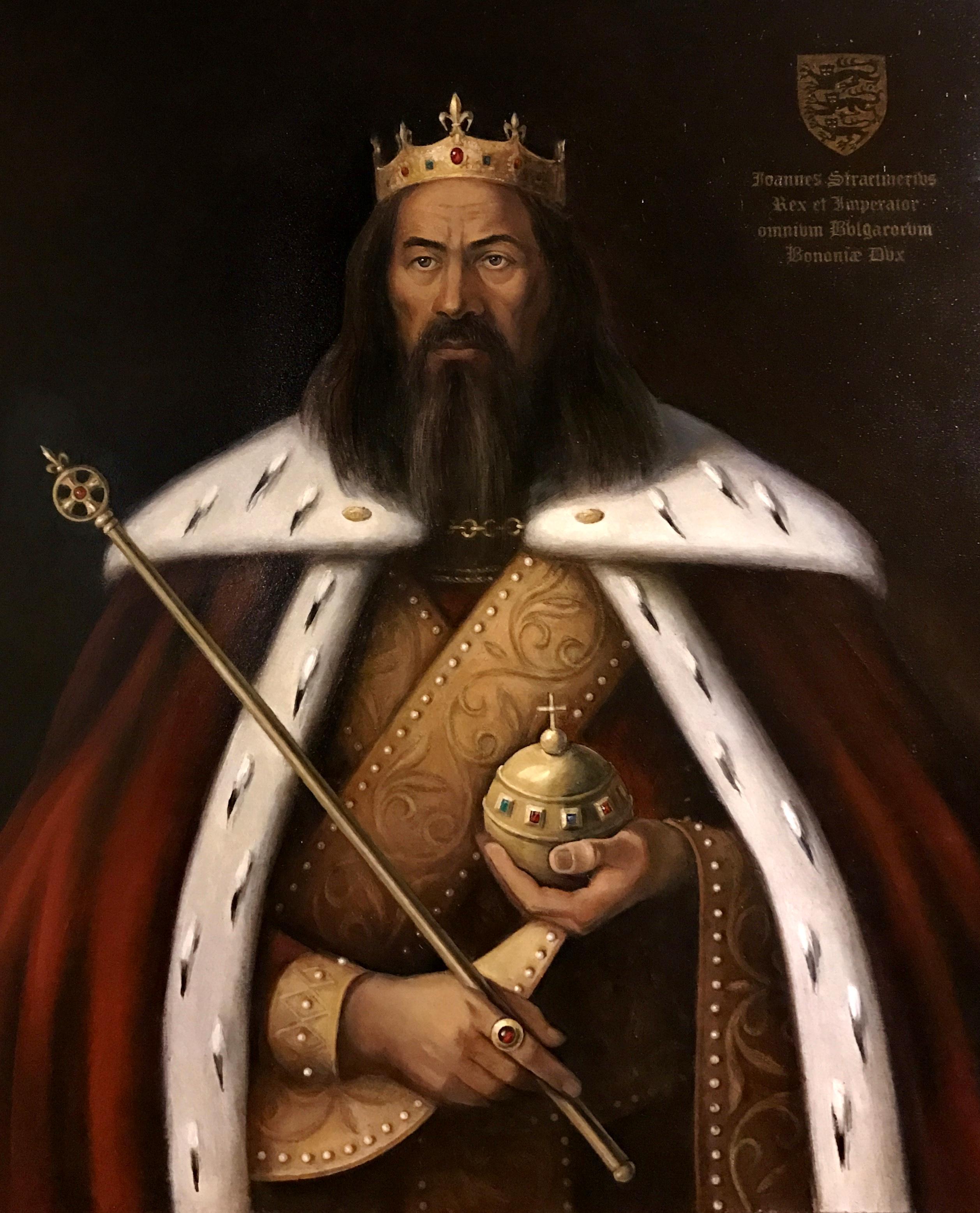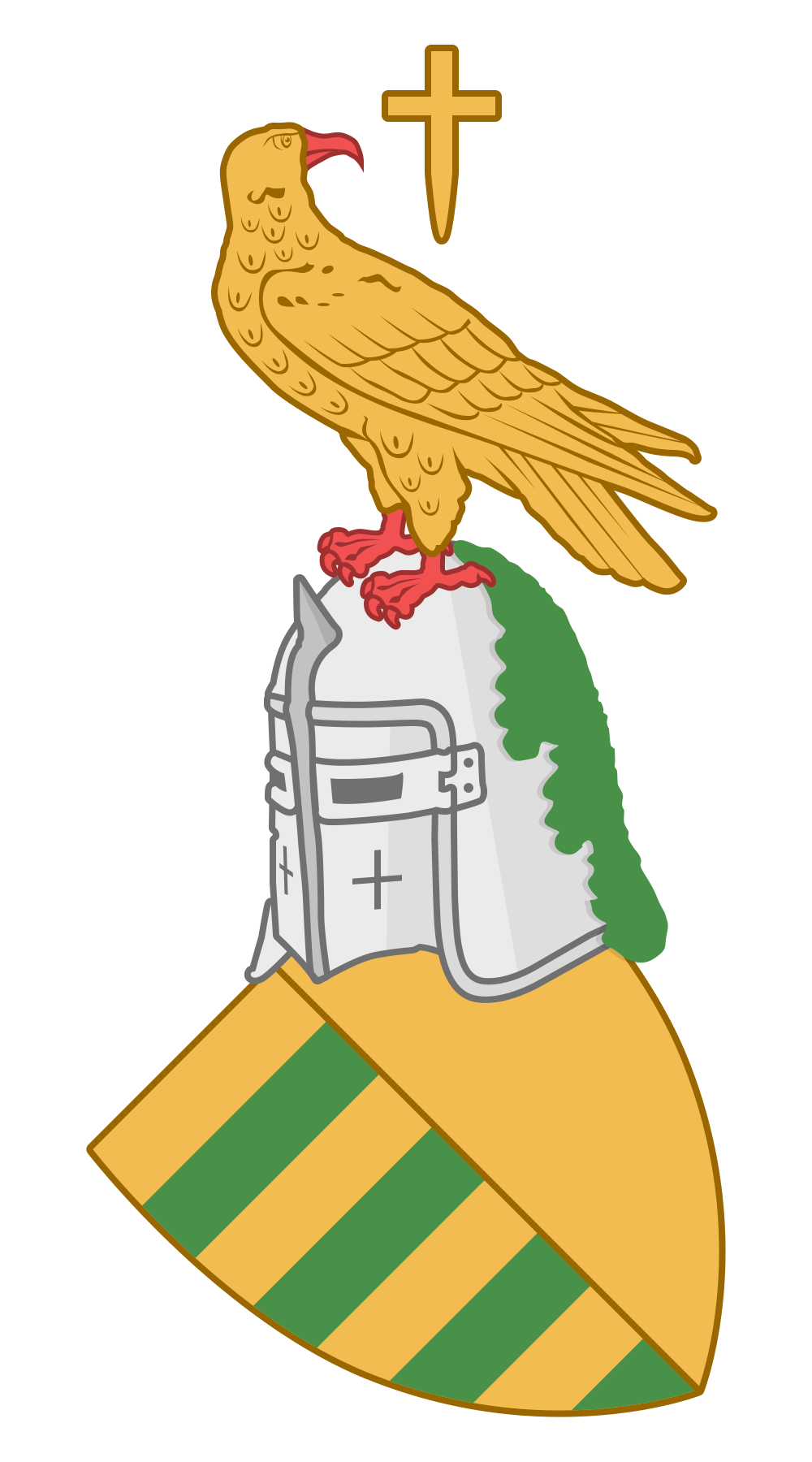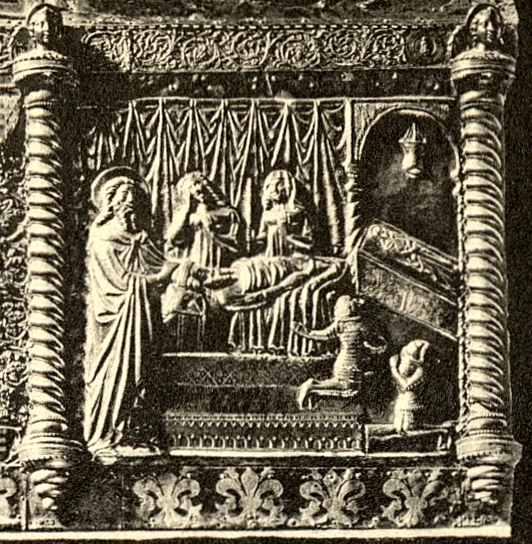|
Anna Of Wallachia
Anna of Wallachia or Anna Basarab ( bg, Анна Басараб) was a Wallachian princess and Empress consort of Bulgaria in Vidin, second wife of Emperor Ivan Sratsimir. She was the daughter of Nicholas Alexander of Wallachia and his Catholic second wife, the Hungarian Clara Dobokai. Her younger sister, Anka, married the Serbian king Stephen Uroš V. Her father's sister was Theodora, the first wife of Emperor Ivan Alexander (r. 1331–1371) and mother of Ivan Sratsimir. She married Ivan Sratsimir in 1356–1357. The marriage was a reaction to Ivan Alexander's divorce from Theodora and was aimed at weakening the position of the new empress, Sarah-Theodora. It is not known whether Theodora had any role in the arrangement of the wedding between her son and her niece or whether it was done on her initiative. Between 1365 and 1369, Vidin was occupied by the Kingdom of Hungary. The ruling family was held captive in the castle of Humnik (in Bosiljevo, Croatia), where they were f ... [...More Info...] [...Related Items...] OR: [Wikipedia] [Google] [Baidu] |
Empress Consort Of Bulgaria
First Bulgarian Empire Second Bulgarian Empire Third Bulgarian State Gallery File:Irene-Komnene-Kastoria.jpg, Anna of Halych File:NHM-BG-photo1-2.jpg, Irene Doukaina Laskarina File:G bogdanov marija.jpg, Maria Palaiologina Kantakouzene File:Sarah-Theodora of Bulgaria.jpg, Sarah-Theodora File:Orlai Queens Mary and Elisabeth Imprisoned in Novigrad 1879.jpg, Elizabeth of Bosnia with her daughter File:Dragana.jpg, Dragana Nemanic File:Maria-Luiza Burbon Parmska.jpg, Marie Louise of Parma File:Eleonoreofbulgaria.JPG, Eleonore Reuss of Köstritz File:BASA-3K-15-637-1-Giovanna of Italy, 1937.jpeg, Giovanna of Italy {{DEFAULTSORT:Royal Consorts Of Bulgaria * Bulgaria Bulgaria (; bg, България, Bǎlgariya), officially the Republic of Bulgaria,, ) is a country in Southeast Europe. It is situated on the eastern flank of the Balkans, and is bordered by Romania to the north, Serbia and North Macedon ... Bulgaria, Royal Consorts of ... [...More Info...] [...Related Items...] OR: [Wikipedia] [Google] [Baidu] |
Kingdom Of Hungary
The Kingdom of Hungary was a monarchy in Central Europe that existed for nearly a millennium, from the Middle Ages into the 20th century. The Principality of Hungary emerged as a Christian kingdom upon the coronation of the first king Stephen I at Esztergom around the year 1000;Kristó Gyula – Barta János – Gergely Jenő: Magyarország története előidőktől 2000-ig (History of Hungary from the prehistory to 2000), Pannonica Kiadó, Budapest, 2002, , p. 687, pp. 37, pp. 113 ("Magyarország a 12. század második felére jelentős európai tényezővé, középhatalommá vált."/"By the 12th century Hungary became an important European factor, became a middle power.", "A Nyugat részévé vált Magyarország.../Hungary became part of the West"), pp. 616–644 his family (the Árpád dynasty) led the monarchy for 300 years. By the 12th century, the kingdom became a European middle power within the Western world. Due to the Ottoman occupation of the central and south ... [...More Info...] [...Related Items...] OR: [Wikipedia] [Google] [Baidu] |
House Of Basarab
The House of Basarab (also Bazarab or Bazaraad, ro, Basarab ) was a ruling family of debated Cuman origin, Terterids and Shishmanids) and the Wallachian dynasty (Basarabids). They also played an active role in Byzantium, Hungary and Serbia, with Cuman immigrants being integrated into each country's elite. which had an important role in the establishing of the Principality of Wallachia, giving the country its first line of Princes, one closely related with the Mușatin rulers of Moldavia. Its status as a dynasty is rendered problematic by the official elective system, which implied that male members of the same family, including illegitimate offspring, were chosen to rule by a council of boyars (more often than not, the election was conditioned by the military force exercised by candidates). After the rule of Alexandru I Aldea (ended in 1436), the house was split by the conflict between the Dănești and the Drăculești, both of which claimed legitimacy. Several late rulers ... [...More Info...] [...Related Items...] OR: [Wikipedia] [Google] [Baidu] |
14th-century Bulgarian People
As a means of recording the passage of time, the 14th century was a century lasting from 1 January 1301 ( MCCCI), to 31 December 1400 ( MCD). It is estimated that the century witnessed the death of more than 45 million lives from political and natural disasters in both Europe and the Mongol Empire. West Africa experienced economic growth and prosperity. In Europe, the Black Death claimed 25 million lives wiping out one third of the European population while the Kingdom of England and the Kingdom of France fought in the protracted Hundred Years' War after the death of Charles IV, King of France led to a claim to the French throne by Edward III, King of England. This period is considered the height of chivalry and marks the beginning of strong separate identities for both England and France as well as the foundation of the Italian Renaissance and Ottoman Empire. In Asia, Tamerlane (Timur), established the Timurid Empire, history's third largest empire to have been ever establish ... [...More Info...] [...Related Items...] OR: [Wikipedia] [Google] [Baidu] |
14th-century Deaths
As a means of recording the passage of time, the 14th century was a century lasting from 1 January 1301 ( MCCCI), to 31 December 1400 ( MCD). It is estimated that the century witnessed the death of more than 45 million lives from political and natural disasters in both Europe and the Mongol Empire. West Africa experienced economic growth and prosperity. In Europe, the Black Death claimed 25 million lives wiping out one third of the European population while the Kingdom of England and the Kingdom of France fought in the protracted Hundred Years' War after the death of Charles IV, King of France led to a claim to the French throne by Edward III, King of England. This period is considered the height of chivalry and marks the beginning of strong separate identities for both England and France as well as the foundation of the Italian Renaissance and Ottoman Empire. In Asia, Tamerlane (Timur), established the Timurid Empire, history's third largest empire to have been ever establ ... [...More Info...] [...Related Items...] OR: [Wikipedia] [Google] [Baidu] |
14th-century Births
As a means of recording the passage of time, the 14th century was a century lasting from 1 January 1301 ( MCCCI), to 31 December 1400 ( MCD). It is estimated that the century witnessed the death of more than 45 million lives from political and natural disasters in both Europe and the Mongol Empire. West Africa experienced economic growth and prosperity. In Europe, the Black Death claimed 25 million lives wiping out one third of the European population while the Kingdom of England and the Kingdom of France fought in the protracted Hundred Years' War after the death of Charles IV, King of France led to a claim to the French throne by Edward III, King of England. This period is considered the height of chivalry and marks the beginning of strong separate identities for both England and France as well as the foundation of the Italian Renaissance and Ottoman Empire. In Asia, Tamerlane (Timur), established the Timurid Empire, history's third largest empire to have been ever esta ... [...More Info...] [...Related Items...] OR: [Wikipedia] [Google] [Baidu] |
Women Of Medieval Wallachia
A woman is an adult female human. Prior to adulthood, a female human is referred to as a girl (a female child or adolescent). The plural ''women'' is sometimes used in certain phrases such as "women's rights" to denote female humans regardless of age. Typically, women inherit a pair of X chromosomes, one from each parent, and are capable of pregnancy and giving birth from puberty until menopause. More generally, sex differentiation of the female fetus is governed by the lack of a present, or functioning, SRY-gene on either one of the respective sex chromosomes. Female anatomy is distinguished from male anatomy by the female reproductive system, which includes the ovaries, fallopian tubes, uterus, vagina, and vulva. A fully developed woman generally has a wider pelvis, broader hips, and larger breasts than an adult man. Women have significantly less facial and other body hair, have a higher body fat composition, and are on average shorter and less muscular than men. Througho ... [...More Info...] [...Related Items...] OR: [Wikipedia] [Google] [Baidu] |
Bulgarian Consorts
First Bulgarian Empire Second Bulgarian Empire Third Bulgarian State Gallery File:Irene-Komnene-Kastoria.jpg, Anna of Halych File:NHM-BG-photo1-2.jpg, Irene Doukaina Laskarina File:G bogdanov marija.jpg, Maria Palaiologina Kantakouzene File:Sarah-Theodora of Bulgaria.jpg, Sarah-Theodora File:Orlai Queens Mary and Elisabeth Imprisoned in Novigrad 1879.jpg, Elizabeth of Bosnia with her daughter File:Dragana.jpg, Dragana Nemanic File:Maria-Luiza Burbon Parmska.jpg, Marie Louise of Parma File:Eleonoreofbulgaria.JPG, Eleonore Reuss of Köstritz File:BASA-3K-15-637-1-Giovanna of Italy, 1937.jpeg, Giovanna of Italy {{DEFAULTSORT:Royal Consorts Of Bulgaria * Bulgaria Bulgaria (; bg, България, Bǎlgariya), officially the Republic of Bulgaria,, ) is a country in Southeast Europe. It is situated on the eastern flank of the Balkans, and is bordered by Romania to the north, Serbia and North Macedon ... Bulgaria, Royal Consorts of ... [...More Info...] [...Related Items...] OR: [Wikipedia] [Google] [Baidu] |
Hagiographies
A hagiography (; ) is a biography of a saint or an ecclesiastical leader, as well as, by extension, an adulatory and idealized biography of a founder, saint, monk, nun or icon in any of the world's religions. Early Christian hagiographies might consist of a biography or ', a description of the saint's deeds or miracles (from Latin ''vita'', life, which begins the title of most medieval biographies), an account of the saint's martyrdom (called a ), or be a combination of these. Christian hagiographies focus on the lives, and notably the miracles, ascribed to men and women canonized by the Roman Catholic church, the Eastern Orthodox Church, the Oriental Orthodox churches, and the Church of the East. Other religious traditions such as Buddhism, Hinduism, Taoism, Islam, Sikhism and Jainism also create and maintain hagiographical texts (such as the Sikh Janamsakhis) concerning saints, gurus and other individuals believed to be imbued with sacred power. Hagiographic works, especiall ... [...More Info...] [...Related Items...] OR: [Wikipedia] [Google] [Baidu] |
Eastern Orthodox
Eastern Orthodoxy, also known as Eastern Orthodox Christianity, is one of the three main branches of Chalcedonian Christianity, alongside Catholicism and Protestantism. Like the Pentarchy of the first millennium, the mainstream (or "canonical") Eastern Orthodox Church is organised into autocephalous churches independent from each other. In the 21st century, the number of mainstream autocephalous churches is seventeen; there also exist autocephalous churches unrecognized by those mainstream ones. Autocephalous churches choose their own primate. Autocephalous churches can have jurisdiction (authority) over other churches, some of which have the status of "autonomous" which means they have more autonomy than simple eparchies. Many of these jurisdictions correspond to the territories of one or more modern states; the Patriarchate of Moscow, for example, corresponds to Russia and some of the other post-Soviet states. They can also include metropolises, bishoprics, parishes, monas ... [...More Info...] [...Related Items...] OR: [Wikipedia] [Google] [Baidu] |
Tvrtko I Of Bosnia
Stephen Tvrtko I ( sh-Latn-Cyrl, separator=" / ", Stjepan/Stefan Tvrtko, Стјепан/Стефан Твртко; 1338 – 10 March 1391) was the first king of Bosnia. A member of the House of Kotromanić, he succeeded his uncle Stephen II as Ban of Bosnia in 1353. As he was a minor at the time, Tvrtko's father, Vladislav, briefly ruled as regent, followed by Tvrtko's mother, Jelena. Early in his personal rule, Tvrtko quarreled with his country's Roman Catholic clergy, but later enjoyed cordial relations with all the religious communities in his realm. After initial difficulties – the loss of large parts of Bosnia to his overlord, King Louis I of Hungary, and being briefly deposed by his magnates – Tvrtko's power grew considerably. He conquered some remnants of the neighbouring Serbian Empire in 1373, after the death of its last ruler and his distant relative, Uroš the Weak. In 1377, he had himself crowned king of Bosnia and of Serbia, claiming to be the heir of Serbia' ... [...More Info...] [...Related Items...] OR: [Wikipedia] [Google] [Baidu] |
Ban (title)
Ban () was a noble title used in several states in Central and Southeastern Europe between the 7th century and the 20th century. The most common examples have been found in Croatia. Sources The first known mention of the title ''ban'' is in the 10th century by Constantine VII Porphyrogenitus, in the work '' De Administrando Imperio'', in the 30th and 31st chapter "Story of the province of Dalmatia" and "Of the Croats and of the country they now dwell in", dedicated to the Croats and the Croatian organisation of their medieval state. In the 30th chapter, describing in Byzantine Greek, how the Croatian state was divided into eleven (; župas), the ban (), (rules over) (Krbava), ( Lika) (and) (Gacka). In the 31st chapter, describing the military and naval force of Croatia, " Miroslav, who ruled for four years, was killed by the () (, i.e. Pribina)", and after that followed a temporary decrease in the military force of the Croatian Kingdom. In 1029, a Latin charter was publ ... [...More Info...] [...Related Items...] OR: [Wikipedia] [Google] [Baidu] |





.jpg)

